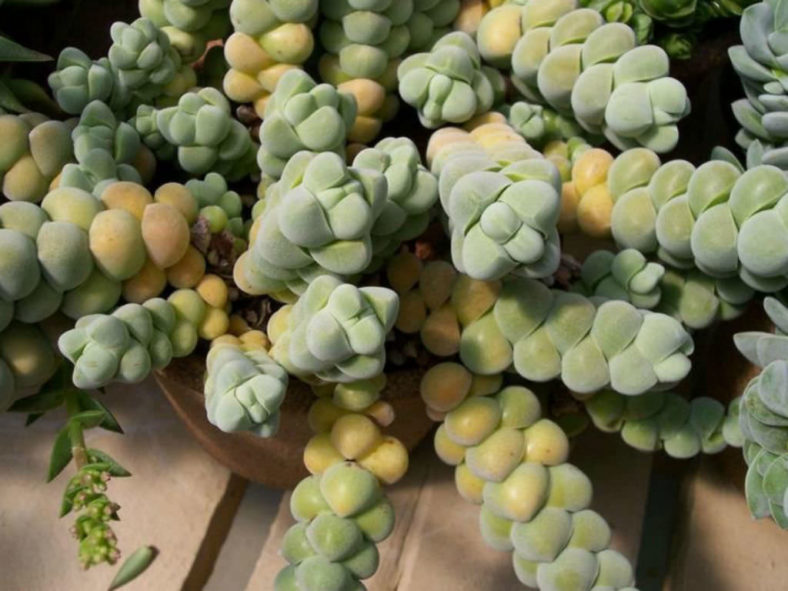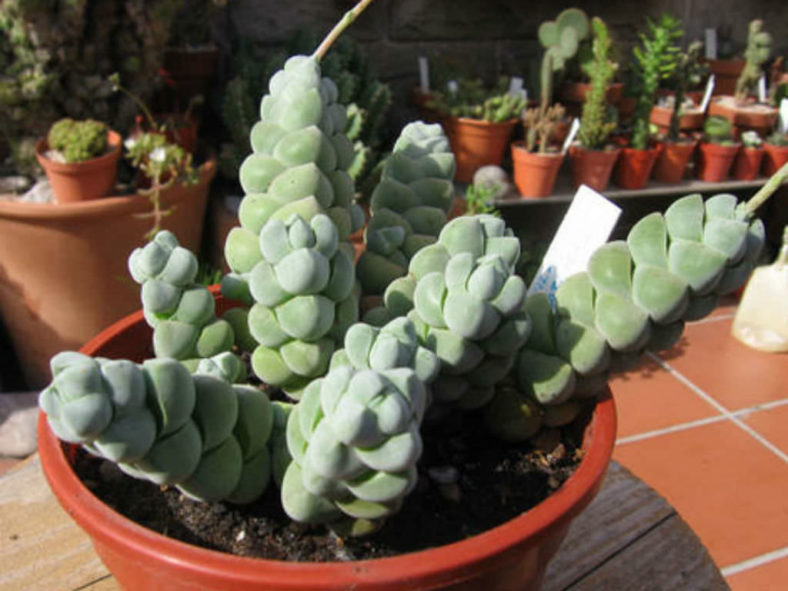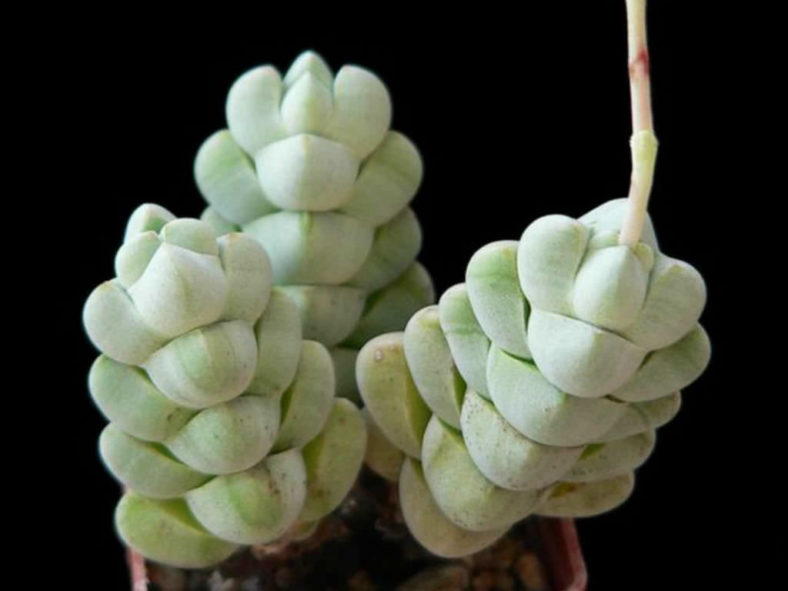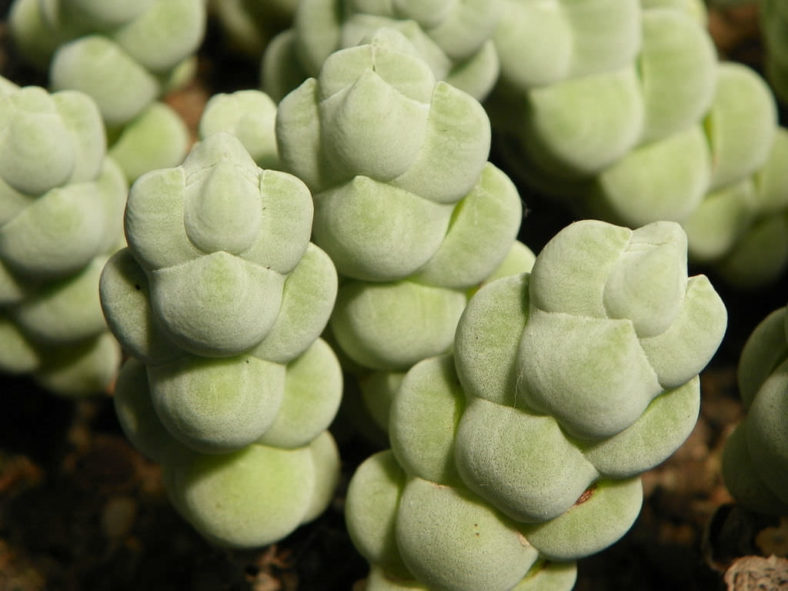Scientific Name
Crassula plegmatoides Friedrich
Synonym(s)
Crassula arta, Crassula deltoidea, Crassula pseudocolumnaris
Scientific Classification
Family: Crassulaceae
Subfamily: Crassuloideae
Genus: Crassula
Etymology
The specific epithet "plegmatoides" (pronounced "pleg-ma-TOH-id-ees") means "resembling a braid". It refers to the tightly overlapping leaf arrangement on the stems of this species, which gives the impression of a braided structure.
Origin
The native range of Crassula plegmatoides is a narrow coastal strip extending from near Port Nolloth in the Northern Cape province of South Africa to the Buchu Mountains in Namibia. It grows on gentle slopes towards the apex of hills and is usually associated with quartzite gravel.
Description
Crassula plegmatoides is a small succulent with erect to decumbent stems and gray, rarely gray-green leaves that closely clasps around the stem, forming a four-angled column. The stems can grow up to 6 inches (15 cm) long, typically with only one main branch or, rarely, with a few much shorter ones emerging from the base. The columns can reach up to 0.8 inches (2 cm) in thickness. The leaves are fleshy, broadly ovate, strongly concave above, convex below, and densely covered with spherical papillae. They can measure about 0.3 inches (0.8 cm) in length and 0.5 inches (1.3 cm) in width.
The tubular, cream-colored flowers fade to brown and appear in late summer or fall in small, round-topped clusters on a pubescent stalk that can grow up to 2.4 inches (6 cm) long.
Crassula plegmatoides is similar to Crassula deceptor but can be easily distinguished by the adpressed apex of its leaves.

How to Grow and Care for Crassula plegmatoides
Hardiness: USDA hardiness zones 9b to 11b: from 25°F (-3.9°C) to 50°F (10°C).
Crassulas are easy to grow but susceptible to mealybugs and fungal diseases. As with all succulents, overwatering is fatal, so err on the side of too dry rather than too wet. Never let your plant sit in water. If you water from beneath by allowing the plant to sit in a saucer, pour off any excess water after a few minutes.
These succulents are generally started by division, offsets, or leaf cuttings. Crassulas can be easily propagated from a single leaf. Sprout leaves by placing them into a potting mix for succulents, then cover the dish until they sprout.
Repot as needed, preferably during the warm season. To repot your Crassula, ensure the soil is dry before repotting, then gently remove the pot. Knock away the old soil from the roots, removing any rotted or dead roots. Treat any cuts with a fungicide. Place the plant in its new pot and backfill it with potting soil, spreading the roots as you repot. Leave the plant dry for a week or so, then begin to water lightly to reduce the risk of root rot.
Learn more at How to Grow and Care for Crassula.
Links
- Back to genus Crassula
- Succupedia: Browse succulents by Scientific Name, Common Name, Genus, Family, USDA Hardiness Zone, Origin, or cacti by Genus
Photo Gallery
Click on a photo to see a larger version.


